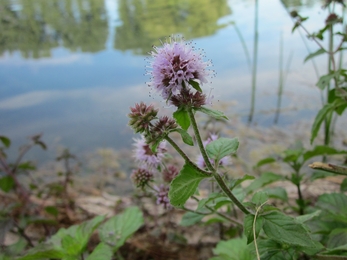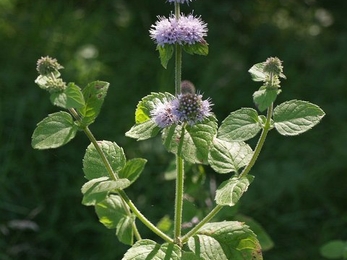As the seasons change, the vibrant colours of summer give way to the rich russet hues of autumn. Along the edges of our chalk streams, water mint plants are displaying their last splashes of pinkish purple. From July to October, this native plant brightens up riverbanks with its dense clusters of tiny flowers. Even in the colder months, you can still spot its square stems and hairy, jagged-edged leaves.
Water mint is one of about 15 mint species that grow in the UK, although many of these are hybrids. Did you know, for example, that peppermint is a cross between water mint and spearmint – another of our native mint species? In fact, peppermint plants can sometimes be found growing in the wild near their parents.
As its name suggests, water mint loves to grow in damp places. It favours ponds, bog gardens, marshes, floodplain meadows, wet woodlands, and the margins of rivers. In an ideal habitat, it can grow to over 50cm tall and spread sideways through rhizomes (thick stems that grow underground) and runners (thin stems that grow on or close to the ground).



